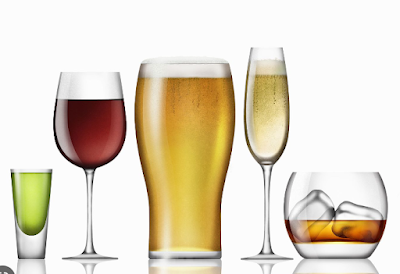Yes – you heard that right – exercise has actually been proven to help people reduce or eliminate alcohol intake and mitigate alcohol dependence. Multiple studies have proven that exercise is an effective adjunctive treatment for the treatment of alcoholism
For example,
in a meta-analysis of 7 randomized controlled trials using exercise
interventions for the treatment of alcoholism exercise was shown to
significantly reduce alcohol consumption!
This included all forms of exercise such as aerobic and resistance
training.
The
effects of Fibroplast growth factor 21 (FGF21) on Alcohol Intake
FGF21 is a
hormone released by the liver and muscle during exercise.
When FGF21
was given to mice and vervet monkeys addicted to alcohol - it reduced their alcohol
intake by 50%. FGF21 cross the
blood-brain barrier and binds to receptors in the hypothalamus where it alters
dopamine signaling which plays a prominent role in alcohol craving.
The liver
releases FGF21 after alcohol intake with a significant increase in blood
levels.
Studies have
shown that FGF21 is elevated from aerobic exercise and peaks 60 minutes later
than returns to baseline 2 hours later.
A Mouse
Study showed that:
Mice that
were unable to release FGF21 consumed more alcohol
Mice given
an FGF21 analog decreased their alcohol consumption by 50%
Another
study used Vervent Monkeys. Vervent
Monkeys fall into three subtypes as it relates to alcohol in a distribution
seen in humans:
Alcohol
avoiders who do NOT like alcohol
Moderate
alcohol drinkers
Heavy
drinkers who will consume alcohol until drunk
Monkeys
given FGF21 reduced alcohol consumption
Collectively
these studies suggest that FGF21 is involved in telling our brains whether to
drink more alcohol or not and does so across at least two species studied and
that increasing FGF21 may decrease alcohol consumption in humans as well.
Exercise
also modulates the brain’s dopamine reward system as well as boosting Brain
Derived Neurotrophic Factor (BDNF). Low
BDNF levels have been correlated with the severity of alcoholism in clinical
studies of alcoholics! In addition,
regular alcohol use decreases BDNF and is associated with cognitive defects
from alcohol consumption.




